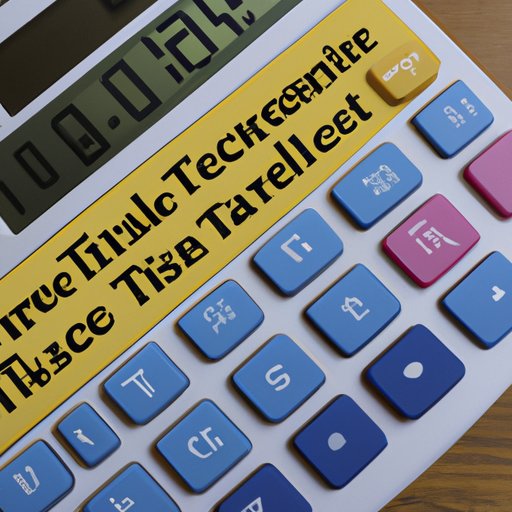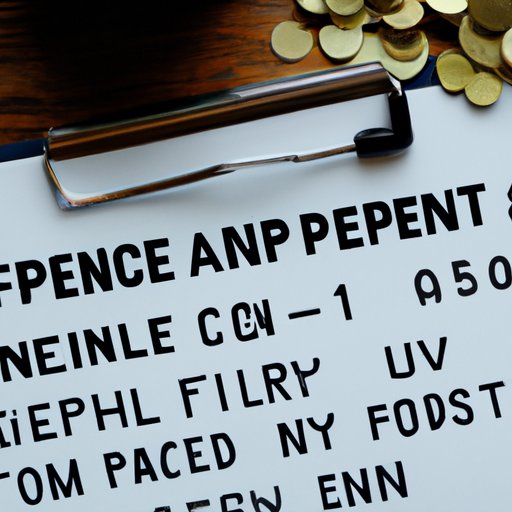Introduction
Certificates of Deposit (CDs) are a type of low-risk investment that has been around for years. They offer investors a guaranteed return as long as they hold the CD until it matures. CDs can be an attractive option for those looking for a relatively safe and secure way to invest their money. In this article, we will explore the basics of investing in CDs, the different types available, the factors that influence CD rates, the potential fees and penalties associated with them, and the tax implications of investing in CDs. Finally, we will discuss how to develop a successful CD investment strategy.
Overview of CD Investment
A CD is a type of deposit account offered by banks and credit unions. When you purchase a CD, you agree to keep your money in the account for a fixed period of time, usually between three months and five years. In exchange, the bank promises to pay you a fixed interest rate on the money throughout the term of the CD. At the end of the term, you can withdraw the money plus any accrued interest.
Benefits of Investing in CDs
CDs offer several advantages over other types of investments. They are relatively low risk because you are guaranteed to get your principal back at the end of the term, regardless of what happens in the stock market or other economic conditions. Additionally, CDs typically have higher interest rates than savings accounts or money market accounts, so you can earn more money over time. Finally, CDs are insured up to $250,000 per depositor by the FDIC or NCUA, so you can rest assured that your money is safe.

Research the Different Types of CDs Available
There are several different types of CDs available, each with its own advantages and disadvantages. Here is a brief overview of some of the most common types:
Traditional CDs
Traditional CDs are the most basic type of CD. They typically have a fixed term and interest rate, and you can’t make any additional deposits or withdrawals during the term. Traditional CDs generally require a minimum deposit to open, and the interest rate is often higher for larger deposits.
Variable Rate CDs
Variable rate CDs allow you to take advantage of changing interest rates. The interest rate is adjusted periodically based on current market conditions. With variable rate CDs, you can often make additional deposits during the term and may even be able to withdraw some of your money without penalty.
No Penalty CDs
No penalty CDs are similar to traditional CDs, but they allow you to withdraw funds without penalty if you need to. These CDs typically have lower interest rates than traditional CDs, but they offer more flexibility.
Bump-Up CDs
Bump-up CDs allow you to increase the interest rate one time during the term of the CD. This gives you the opportunity to take advantage of higher rates if they become available. However, these CDs usually have lower starting rates than traditional CDs.

Calculate Your Risk Tolerance and Investment Goals
Before investing in CDs, it’s important to assess your risk tolerance and investment goals. CDs are generally considered to be low-risk investments, so they may not be suitable if you’re looking for higher returns. On the other hand, if you’re looking for a safe place to store your money, CDs can be a good option.
It’s also important to consider your risk tolerance when choosing a CD. If you’re comfortable with taking on more risk, you may want to consider a variable rate or bump-up CD. These types of CDs can offer higher returns, but they also come with greater risks.

Understand How CD Rates are Determined
CD rates are determined by a variety of factors, including the current interest rate environment, the term of the CD, and the amount of money you deposit. Generally speaking, longer terms and larger deposits will result in higher interest rates.
It’s also important to compare rates from different banks. Some banks may offer higher rates than others, so it pays to shop around. You can use websites like Bankrate.com to compare rates from different banks.

Consider Additional Fees and Penalties
When investing in CDs, it’s important to be aware of any additional fees and penalties that may apply. For example, most CDs impose a penalty if you withdraw money before the CD matures. This penalty is usually equal to a certain percentage of the total deposit.
You should also be aware of any other fees that may be associated with the CD. Many banks charge fees for opening and maintaining the account, as well as fees for early withdrawal. Make sure you understand all of the fees associated with the CD before investing.
Understand Tax Implications and Benefits
It’s important to understand the tax implications of investing in CDs. Generally speaking, interest earned from CDs is taxable as ordinary income. That means you’ll have to pay taxes on the interest earned each year.
On the other hand, there can be some tax benefits associated with investing in CDs. For example, if you use the money from a CD to buy a home, you may be able to deduct some of the interest you paid on the CD. Additionally, if you’re in a high tax bracket, the interest earned from CDs may be taxed at a lower rate than other types of income.
Develop a CD Investment Strategy
Once you’ve done your research and understand the different types of CDs available, it’s time to develop a CD investment strategy. Start by setting a budget for how much money you want to invest. Then, decide on a timeline for when you want to reach your investment goals. Finally, diversify your investments by investing in different types of CDs with different maturities.
Conclusion
Investing in CDs can be a great way to save for the future. It’s important to do your research and understand the different types of CDs available, as well as the factors that influence CD rates. Additionally, make sure you understand the tax implications and potential fees and penalties associated with CDs. Finally, develop a CD investment strategy that fits your budget and timeline.
Summary of Key Points
Investing in CDs can be a great way to save for the future. There are several different types of CDs available, each with its own advantages and disadvantages. It’s important to assess your investment goals and risk tolerance before investing in CDs, and to compare rates from different banks. Additionally, make sure you understand the potential fees and penalties, as well as the tax implications. Finally, develop a CD investment strategy that fits your budget and timeline.
Final Thoughts on CD Investing
CDs can be a great way to save for the future. They offer relatively low risk and the potential for higher returns than other types of investments. Before investing in CDs, make sure you understand the different types of CDs available, the factors that influence CD rates, the potential fees and penalties, and the tax implications. Once you’ve done your research, you can develop a CD investment strategy that meets your needs.
(Note: Is this article not meeting your expectations? Do you have knowledge or insights to share? Unlock new opportunities and expand your reach by joining our authors team. Click Registration to join us and share your expertise with our readers.)
